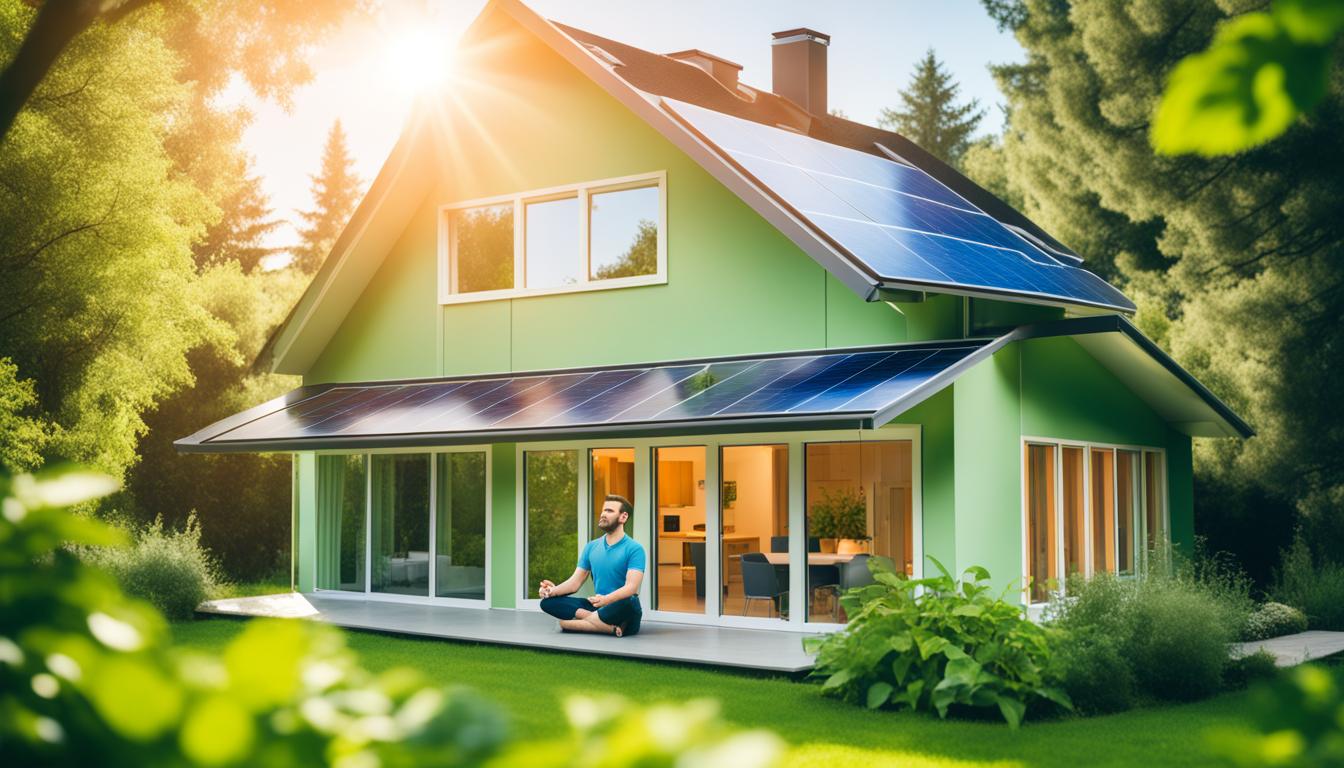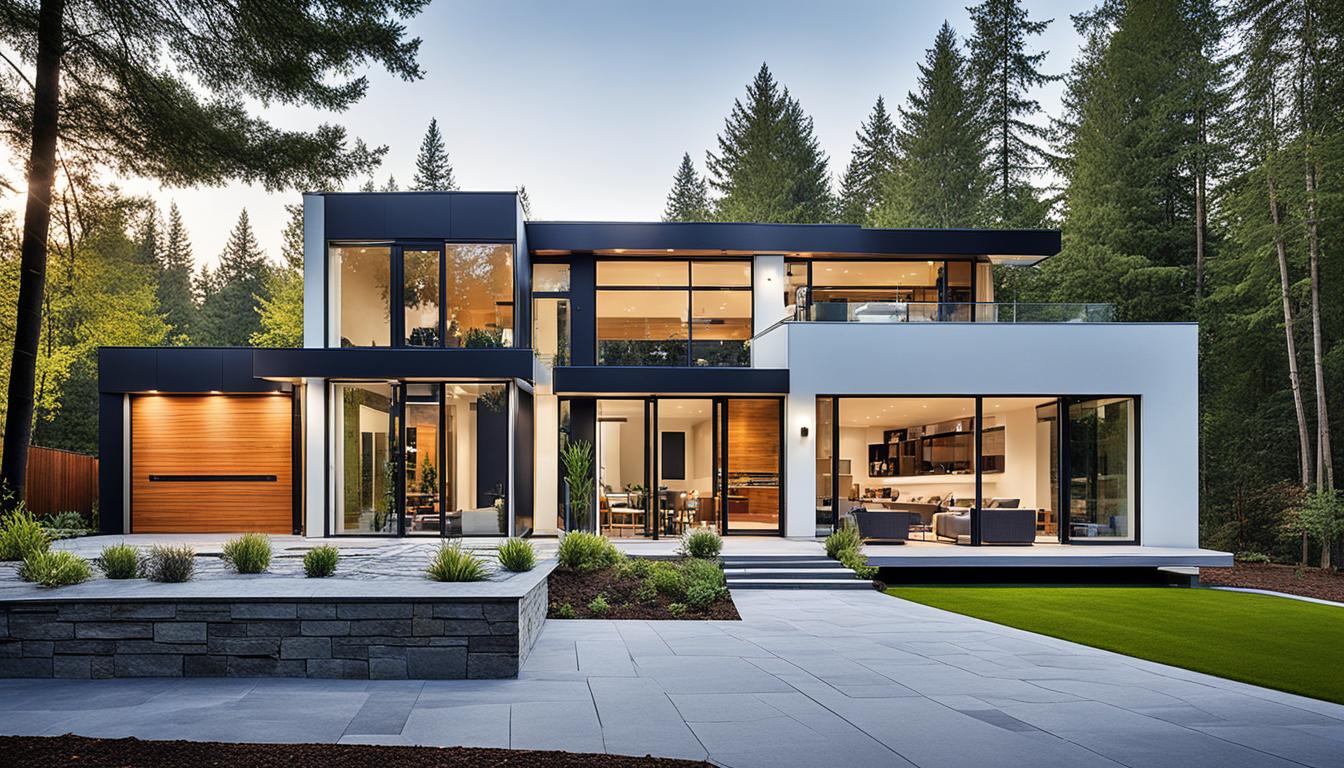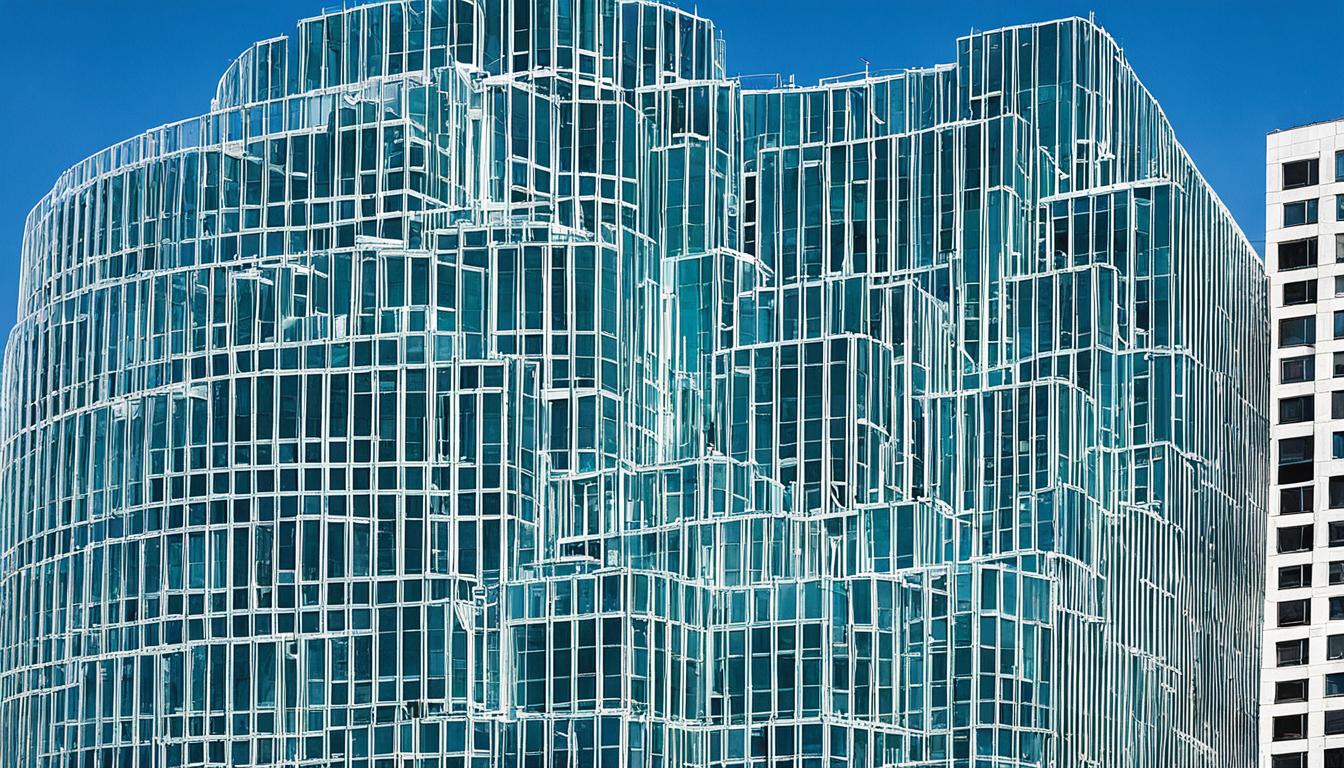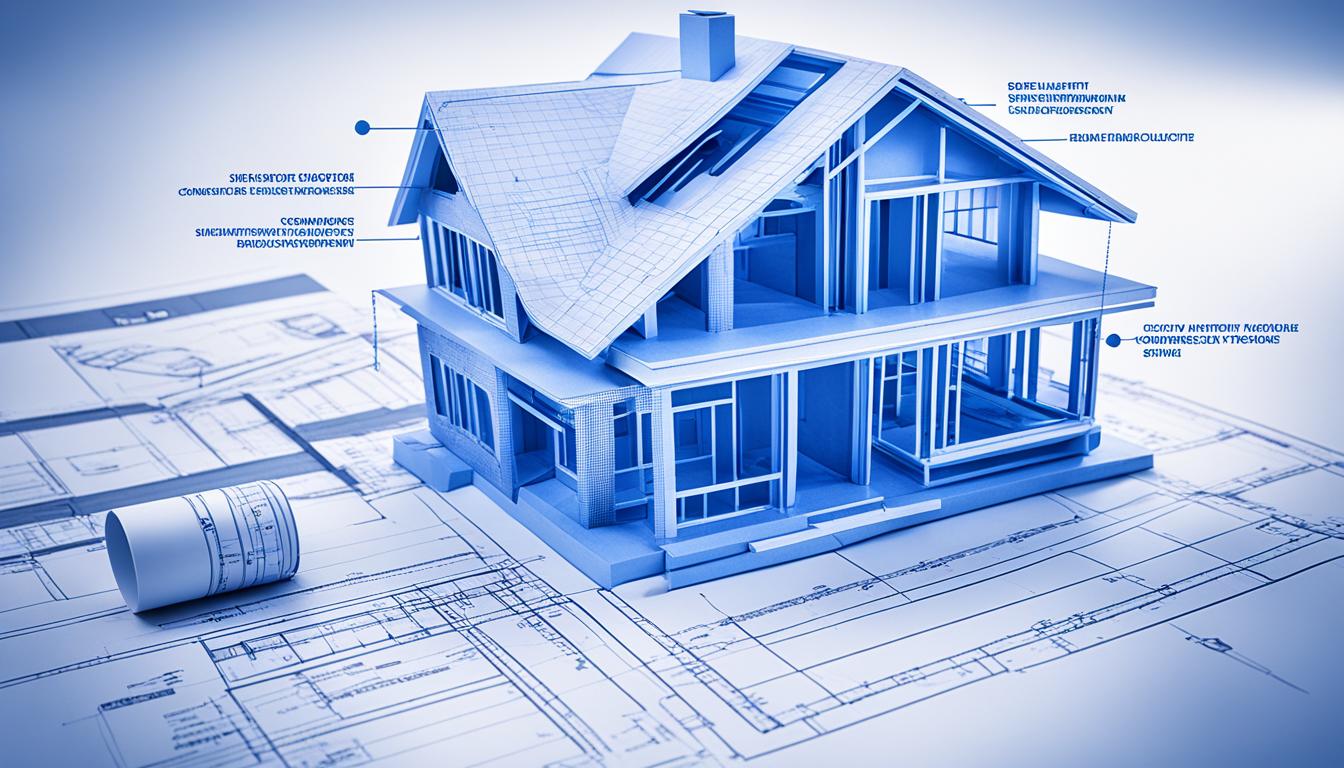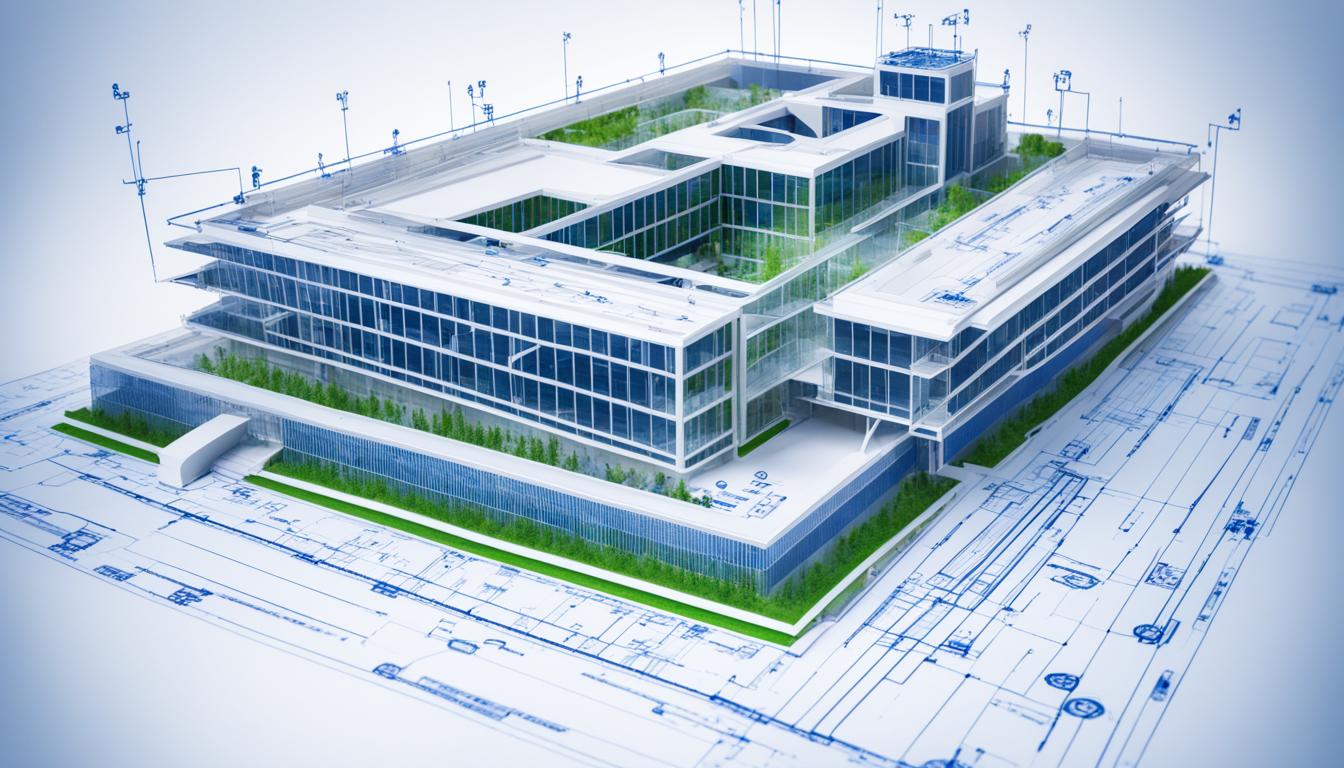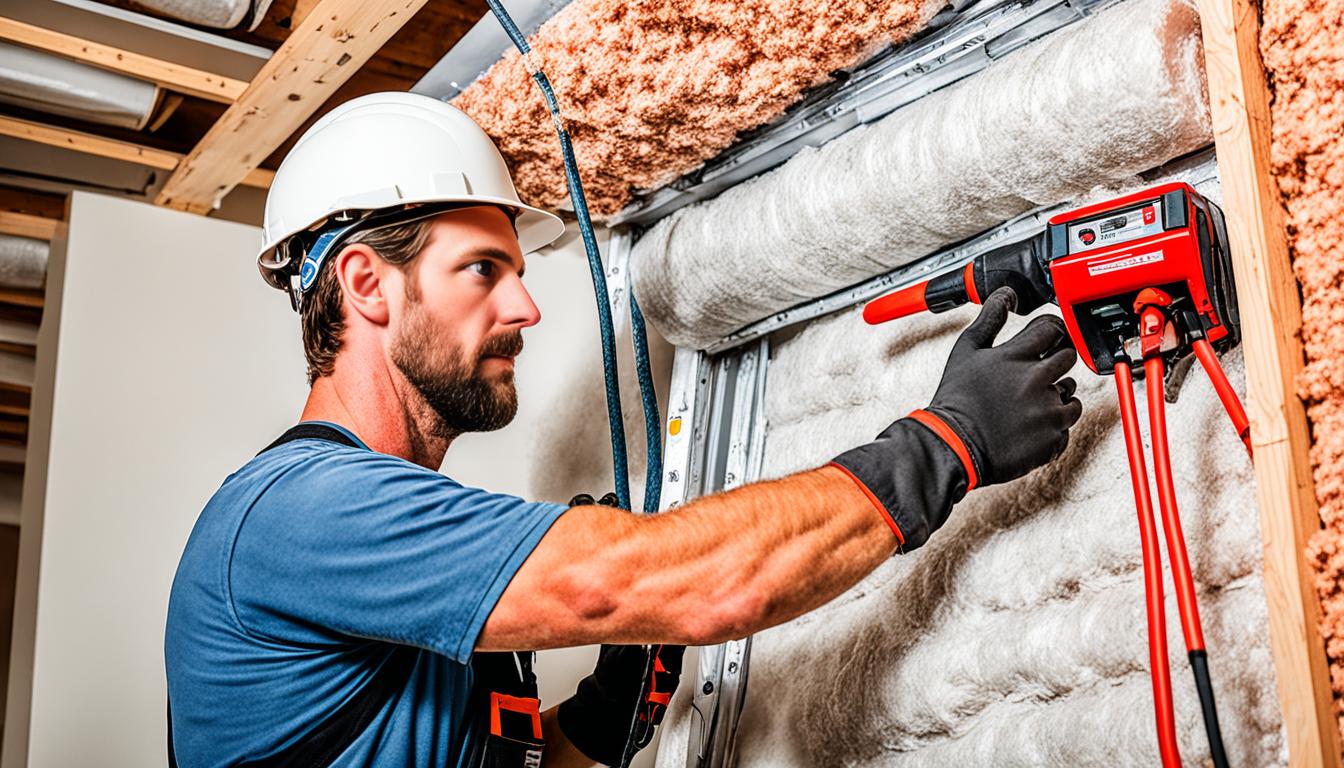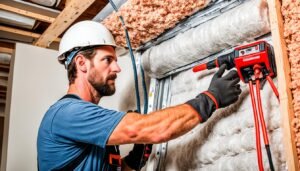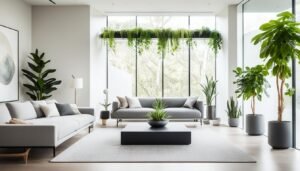Disclosure: This Post Contains Affiliate Links; We earn a commission on purchases.
Creating healthy living spaces is essential for our well-being and the environment. Building sustainable homes with low EMF (electromagnetic fields) is a holistic approach that combines eco-friendly construction techniques with a focus on promoting health and wellness. By prioritizing healthy home design and sustainable living spaces, we can create homes that not only benefit occupants but also contribute to a greener future.
Key Takeaways:
- Building sustainable homes with low EMF is a holistic approach to creating healthier living spaces.
- Eco-friendly construction techniques and healthy home design are essential elements of sustainable homes.
- Creating healthy homes does not necessarily come with a significant increase in cost.
- Building biology principles emphasize healthy indoor air, sustainable environmental performance, and social and ecological connections.
- Healthy homes prioritize clean air, natural light, water quality, low toxicity building materials, temperature control, security, and low EMF exposure.
The Importance of Healthy Home Building
When it comes to creating homes that prioritize occupant health and well-being, healthy home building plays a crucial role. This approach goes beyond the use of green materials and sustainable construction methods, focusing on the specific needs of occupants and the elimination of harmful pollutants. By incorporating building science concepts and a wellness-driven approach, healthy home building ensures that each unique building project promotes a healthier living environment.
Non-Toxic Construction Materials
One of the key principles of healthy home building is the use of non-toxic construction materials. Unlike conventional materials that may contain harmful chemicals and volatile organic compounds (VOCs), non-toxic materials are designed to minimize indoor air pollution and reduce the risk of health issues for occupants. These materials include low/zero-VOC paints, formaldehyde-free insulation, and sustainable flooring options made from natural materials.
Design Methods for Health and Well-being
In addition to using non-toxic materials, healthy home building incorporates design methods that promote occupant health and well-being. This includes considering factors such as natural light, proper ventilation, and acoustics. Designing spaces with ample natural light not only reduces the need for artificial lighting but also improves mood and productivity. Adequate ventilation ensures fresh air circulation and removes indoor air pollutants, while well-designed acoustics minimize noise pollution and create a calm and peaceful living environment.
Healthy home building prioritizes the use of non-toxic construction materials and design methods to create living spaces that promote occupant health and well-being.
Eco-Conscious Home Building
Healthy home building is also inherently eco-conscious. By focusing on non-toxic materials and sustainable construction practices, these homes reduce the negative impact on the environment. It embraces the principles of green building by optimizing energy efficiency, utilizing renewable resources, and reducing waste generation. Additionally, eco-conscious home building promotes the use of locally sourced materials and supports regional craftsmanship, contributing to the growth of sustainable and resilient communities.
Whether you’re building a new home or renovating an existing one, healthy home building offers numerous benefits. From improved indoor air quality to reduced exposure to harmful toxins, these homes provide a healthier living environment for you and your loved ones. By prioritizing occupant health, non-toxic materials, and eco-consciousness, healthy home building is the way forward for a brighter and more sustainable future.
| Key Benefits of Healthy Home Building | Features of Non-Toxic Construction Materials |
|---|---|
|
|
The Cost of Building Healthy Homes
Contrary to popular belief, building healthy homes does not necessarily come with a significant increase in cost. Many of the materials and methods utilized in healthy home building are no more expensive than those used by quality custom home builders. The difference lies in the knowledge, practices, and research of builders specializing in healthy home construction. These builders have proven that it is possible to build affordable toxin-free, low-EMF homes that meet residential codes without compromising on aesthetics or quality.
By prioritizing the use of non-toxic construction materials, incorporating proper ventilation systems, and implementing energy-efficient designs, the cost of building a healthy home can be comparable to conventional construction. Although some specialized components may have slightly higher upfront costs, the long-term benefits in terms of improved health and reduced environmental impact far outweigh any initial investment.
Builders focusing on affordable healthy home construction are knowledgeable about the latest advancements in building science and have access to a wide range of sustainable and toxin-free materials. They optimize resource utilization and prioritize energy-efficient systems to ensure optimal indoor air quality, thermal comfort, and low EMF levels.
The Benefits of Building Affordable Healthy Homes
Building affordable healthy homes not only benefits the occupants but also contributes to a greener future. Here are some key advantages:
- Improved Indoor Air Quality: Healthy home construction eliminates or significantly reduces the use of materials that emit Volatile Organic Compounds (VOCs) or contribute to poor indoor air quality. This results in healthier living environments and reduces the risk of respiratory issues, allergies, and other health problems associated with pollutants.
- Reduced Environmental Impact: By using sustainable materials, energy-efficient systems, and incorporating responsible waste management practices, healthy home builders help minimize the environmental impact of construction. This leads to reduced carbon emissions, conservation of natural resources, and a smaller ecological footprint.
- Enhanced Energy Efficiency: Affordable healthy homes are designed with energy-efficient principles in mind. They utilize advanced insulation, high-performance windows, efficient HVAC systems, and renewable energy technologies to minimize energy consumption and reduce utility costs. This not only benefits the residents financially but also contributes to a more sustainable future.
- Promotion of Occupant Health and Well-being: Affordable healthy homes prioritize the physical, mental, and emotional well-being of occupants by providing a comfortable and healthy living environment. This includes optimizing natural light, ensuring optimal temperature and humidity control, and minimizing exposure to electromagnetic fields (EMF), creating spaces that promote relaxation, productivity, and overall well-being.
Overall, the cost of building healthy homes is a worthwhile investment that offers long-term benefits for both individuals and the environment. The affordability and accessibility of toxin-free, low-EMF homes are increasing as builders expand their knowledge and practices in this specialized field.
The Principles of Building Biology
In the pursuit of creating healthy homes, building biology offers a comprehensive approach that addresses various aspects of building design and construction. The principles of building biology focus on creating living spaces that prioritize the well-being of occupants and promote a sustainable and ecologically sound environment.
One of the key elements of building biology is ensuring healthy indoor air quality. This involves minimizing indoor air pollutants, such as volatile organic compounds (VOCs) and other toxic substances. The use of natural, non-toxic building materials is encouraged to reduce the presence of harmful chemicals in the indoor environment.
Thermal and acoustic comfort are also important considerations in building biology. By incorporating effective insulation and soundproofing techniques, occupants can enjoy optimal thermal conditions and a quieter living space, enhancing their overall comfort and well-being.
Human-based design principles are at the core of building biology. This approach emphasizes creating living spaces that are tailored to the specific needs and preferences of the occupants. It takes into account factors such as ergonomic design, efficient space utilization, and the promotion of a sense of well-being and connectivity within the home.
Sustainable environmental performance is another key aspect of building biology. This involves incorporating energy-efficient systems and technologies, utilizing renewable energy sources, and implementing water conservation measures. By minimizing the environmental impact of a home, building biology contributes to a greener and more sustainable future.
Building biology also emphasizes the importance of socially connected and ecologically sound homes. It promotes the use of regional building traditions and craftsmanship, fostering a sense of community and preserving cultural heritage. By integrating harmoniously with their surroundings, these homes contribute to the overall well-being of both the occupants and the environment.
A holistic approach to construction, building biology offers an innovative perspective on creating healthy and sustainable living spaces. By following its principles, homeowners can enjoy homes that prioritize indoor air quality, thermal and acoustic comfort, human-based design, sustainable environmental performance, and social and ecological responsibility.
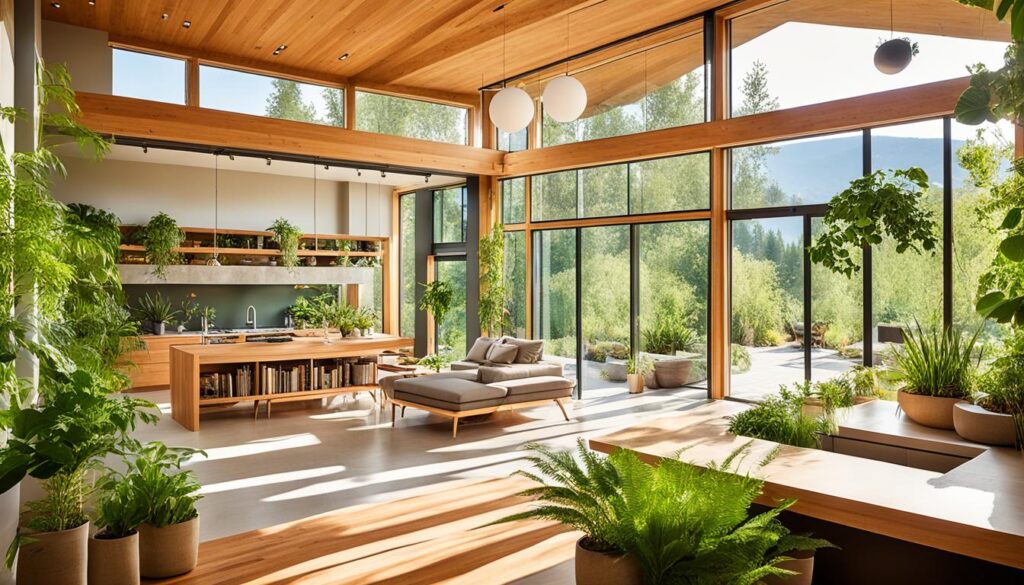
Principles of Building Biology
| Principle | Description |
|---|---|
| Healthy Indoor Air Quality | Minimize indoor air pollutants with natural, non-toxic materials. |
| Thermal and Acoustic Comfort | Provide optimal thermal conditions and soundproofing for occupant comfort. |
| Human-Based Design | Create living spaces that meet the specific needs and preferences of occupants. |
| Sustainable Environmental Performance | Incorporate energy-efficient systems, utilize renewable energy, and implement water conservation measures. |
| Socially Connected and Ecologically Sound Homes | Promote regional building traditions, craftsmanship, and harmonious integration with the environment. |
The Concept of Healthy Homes
In today’s fast-paced world, having a healthy home is more important than ever. A healthy home prioritizes the well-being of its occupants, providing an environment that fosters physical and mental health. Let’s explore some key aspects of healthy homes and how they contribute to a higher quality of life.
Prioritizing Fresh Clean Air
One fundamental aspect of a healthy home is ensuring fresh, clean air for its inhabitants. Proper ventilation and air filtration systems help remove allergens, pollutants, and toxins, improving indoor air quality. This reduces the risk of respiratory issues and allergic reactions, promoting a healthier living environment for everyone.
Maximizing Natural Light
Natural light is not only aesthetically pleasing but also crucial for our overall well-being. It improves mood, productivity, and enhances the body’s natural circadian rhythm. Healthy homes incorporate large windows, skylights, and open floor plans to maximize the entry of natural light, creating a brighter and more uplifting living space.
Ensuring Water Quality
The quality of water we consume is essential for our health. Healthy homes focus on providing clean and safe drinking water for their occupants. This includes using water filtration systems to remove impurities and ensuring the plumbing system is free from contaminants, ensuring access to high-quality water throughout the home.
Using Low Toxicity Building Materials
Traditional building materials can release harmful chemicals and volatile organic compounds (VOCs) into the air, compromising indoor air quality. Healthy homes utilize low toxicity building materials, such as low VOC paints, formaldehyde-free insulation, and sustainable flooring options, creating a healthier and more environmentally friendly living space.
Regulating Temperature Control
Temperature control is essential for maintaining a comfortable and healthy living environment. Healthy homes incorporate energy-efficient systems that ensure optimal temperature regulation, creating a cozy and pleasant indoor atmosphere throughout the year.
Promoting Security
Feeling secure in our homes is vital for our overall well-being. Healthy homes prioritize security features, such as sturdy locks, alarm systems, and well-lit entrances, providing occupants with peace of mind and a sense of safety.
Minimizing EMF Exposure
Minimizing exposure to electromagnetic fields (EMF) is another crucial aspect of healthy homes. EMF is generated by electronic devices and can potentially impact our health. Healthy homes incorporate design principles that minimize EMF exposure, promoting a safer and healthier living space.
By prioritizing fresh clean air, natural light, water quality, low toxicity building materials, temperature control, security, and low EMF, healthy homes provide an optimal environment for the physical and mental well-being of its inhabitants. Investing in a healthy home is an investment in a healthier and happier life.

Key Elements of a Healthy Home
| Aspect | Description |
|---|---|
| Fresh Clean Air | Proper ventilation and air filtration systems to ensure clean and fresh indoor air quality. |
| Natural Light | Maximizing natural light entry through large windows, skylights, and open floor plans. |
| Water Quality | Providing clean and safe drinking water through filtration systems and contaminant-free plumbing. |
| Low Toxicity Building Materials | Using non-toxic and sustainable building materials to minimize indoor air pollutants. |
| Temperature Control | Regulating temperature for optimal comfort and energy efficiency. |
| Security | Promoting safety with sturdy locks, alarm systems, and well-lit entrances. |
| Low EMF | Design principles that minimize exposure to electromagnetic fields for a healthier living environment. |
Conclusion
Building sustainable homes with low EMF is an essential step towards creating eco-friendly, healthy living spaces. By prioritizing non-toxic materials, proper ventilation, natural light, water quality, and temperature control, homeowners can create homes that enhance their well-being and contribute to a sustainable environment.
Incorporating the principles of building biology and healthy home design, these homes offer a holistic approach to construction that benefits both occupants and the planet. By utilizing natural, non-toxic materials and minimizing the presence of electromagnetic fields (EMF), sustainable homes provide a healthier indoor environment for occupants.
Embracing this approach is a commitment to healthier living and a greener future. Creating sustainable homes with low EMF not only supports the well-being of individuals and families, but it also contributes to the overall health of the planet by reducing the environmental impact of construction. In these healthy living spaces, occupants can enjoy the benefits of fresh, clean air, natural light, and low toxicity, leading to improved health and quality of life.
Source Links
- https://www.linkedin.com/pulse/building-biology-healthy-homes-biophilic-architecture-
- https://www.js2partners.com/
- http://senergy360.com/2024/01/15/green-building-practices/

Subscribe to Our Newsletter

